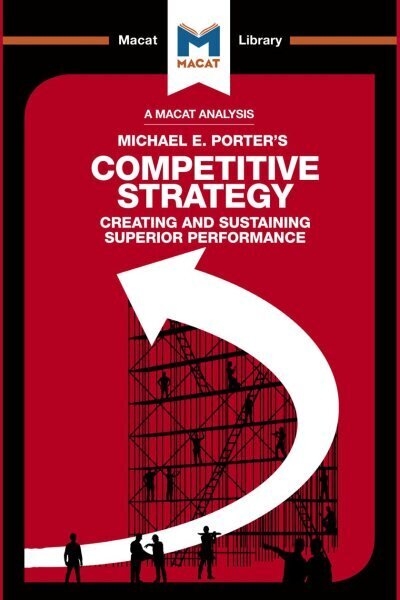
| Autor: | Padraig Belton |
| Lehekülgede arv: | 120 |
| Ilmumisaasta: | 2017 |
| Kauba ID: | 18851593 |
First published in 1980, Michael E. Porter’s Competitive Strategy went against the accepted wisdom of the time that said firms should focus on expanding their market share. Porter claimed they should, in fact, analyze the five forces that mold the environment in which they compete: new entrants, substitute products, buyers, suppliers, and industry rivals. Then they could rationally choose one of three “generic strategies”—lowering cost, differentiating their product, or catering to a niche market.With its straightforward, nontechnical approach, Competitive Strategy soon became one of the most influential and frequently quoted books on business strategy. But it has not been without its critics, who say Porter picked his examples and academic research selectively. Others, meanwhile, claim his theories—now almost four decades old—are out of date for an economy increasingly shaped by globalization, technology, and the Internet.Competitive Strategy is still Porter’s most widely read work, but he has also published Competitive Advantage: Creating and Sustaining Superior Performance (1985), looking at competition from the standpoint of a whole industry, and The Competitive Advantage of Nations (1990), which examines how countries compete with each other economically.
Michael E. Porter’s 1980 book Competitive Strategy is a fine example of critical thinking skills in action. Porter used his strong evaluative skills to overturn much of the accepted wisdom in the world of business. By exploring the strengths and weaknesses of the accepted argument that the best policy for firms to become more successful was to focus on expanding their market share, he was able to establish that the credibility of the argument was flawed. Porter did not believe such growth was the only way for a company to be successful, and provided compelling arguments as to why this was not the case. His book shows how industries can be fragmented, with different firms serving different parts of the market (the low-price mass market, and the expensive high-end market in clothing, for example) and examines strategies that businesses can follow in emerging, mature, and declining markets. If printing is in decline, for example, there may still be a market in this industry for high-end goods and services such as luxury craft bookbinding. Porter also made excellent use of the critical thinking skill of analysis in writing Competitive Strategy. His advice that executives should analyze the five forces that mold the environment in which they compete – new entrants, substitute products, buyers, suppliers, and industry rivals – focused heavily on defining the relationships between these disparate factors and urged readers to check the assumptions of their arguments. Porter avoided technical jargon and wrote in a straightforward way to help readers see that his evaluation of the problem was strong. Competitive Strategy went on to be a highly influential work in the world of business strategy.
| Kauba ID: | 18851593 |
| Kategooria: | Ühiskonnateemalised raamatud |
| Tootepakendite arv: | 1 tk. |
| Paki suurus ja kaal (1): | 0,3 x 0,3 x 0,1 m, 0,2 kg |
| Kirjastus: | Macat International Limited |
| Raamatu keel: | Inglise keel |
| Tüüp: | Täpsustamata |
| Autor: | Padraig Belton |
| Lehekülgede arv: | 120 |
| Ilmumisaasta: | 2017 |
Toodete pildid on illustratiivsed ja näitlikud. Tootekirjelduses sisalduvad videolingid on ainult informatiivsetel eesmärkidel, seega võib neis sisalduv teave erineda tootest endast. Värvid, märkused, parameetrid, mõõtmed, suurused, funktsioonid, ja / või originaaltoodete muud omadused võivad nende tegelikust väljanägemisest erineda, seega palun tutvuge tootekirjeldustes toodud tootespetsifikatsioonidega.